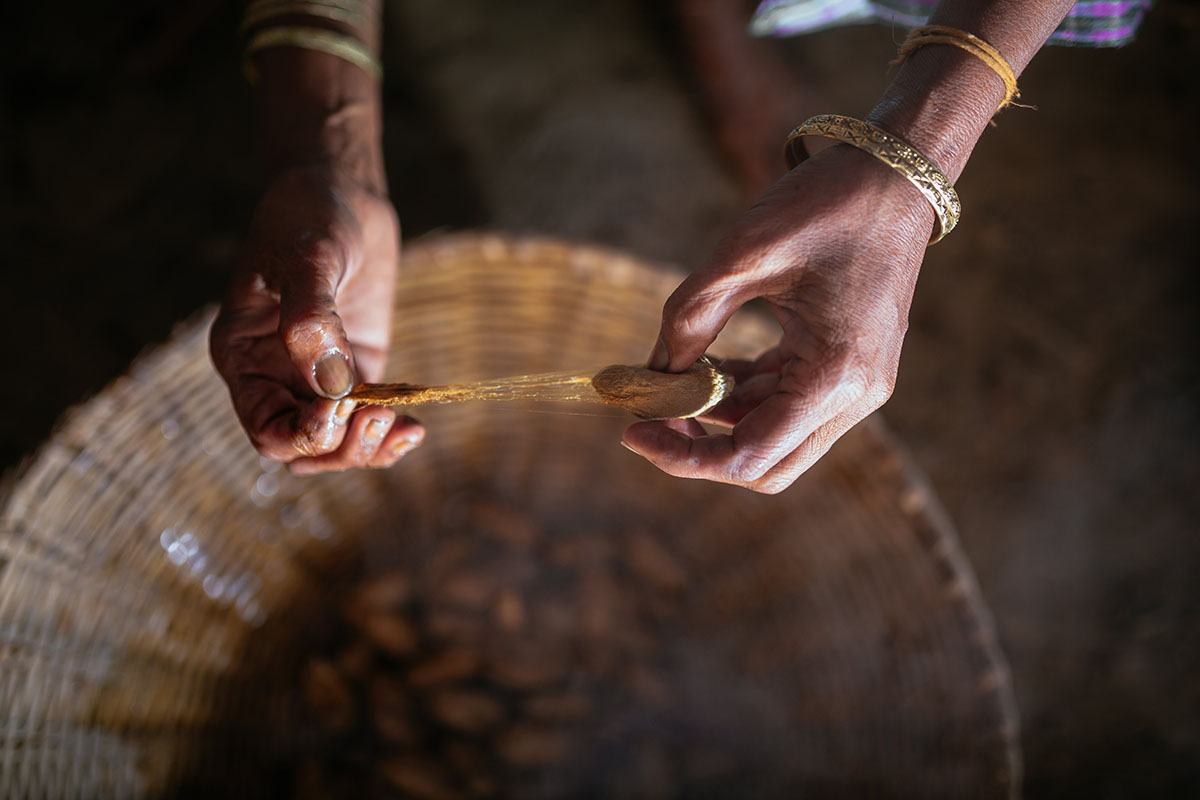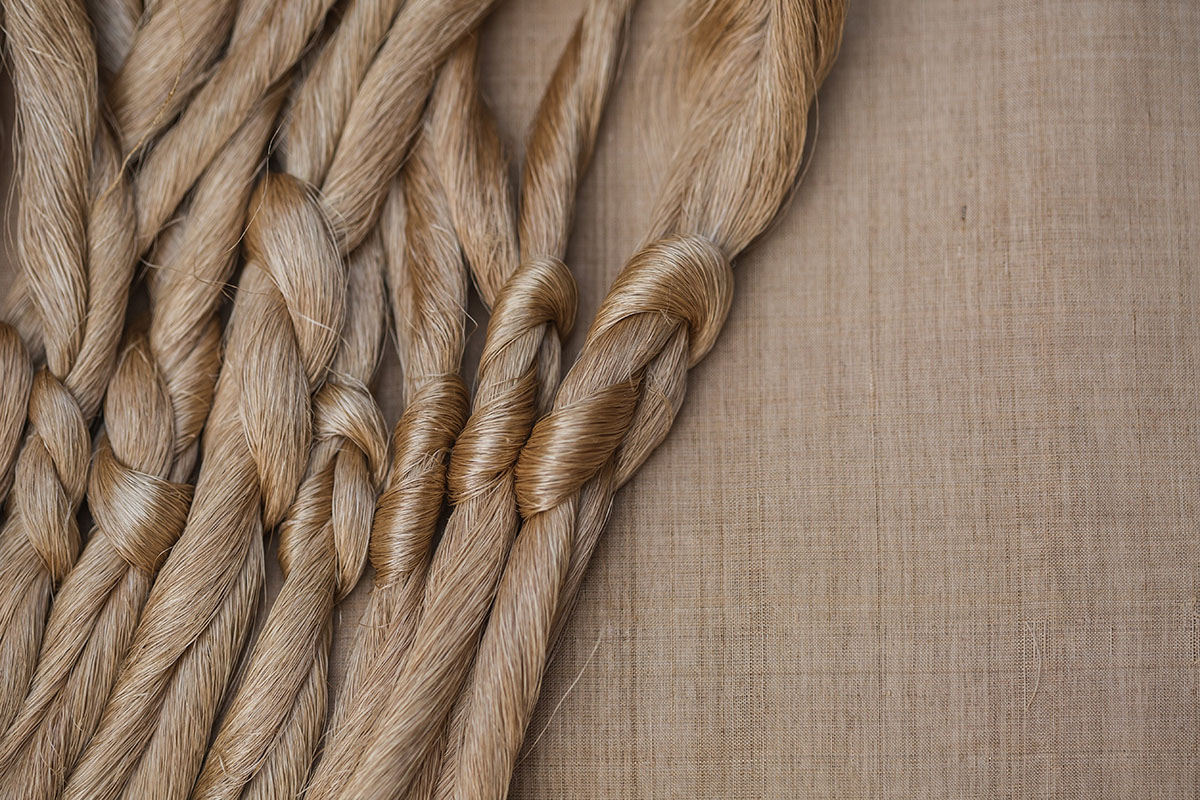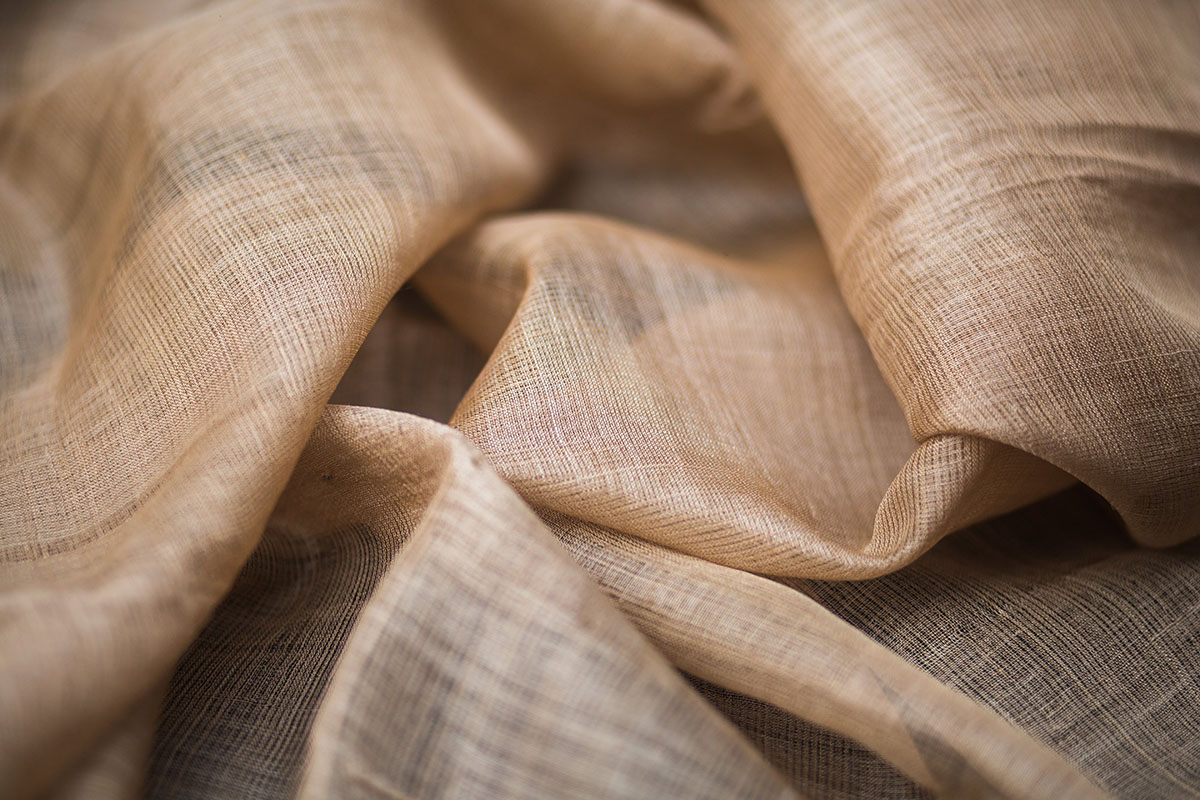ARTICLE
Muga Silk
Often golden amber or creamy white in colour with a smooth texture and shiny appearance, Muga silk fibres derive from the northeast of India, namely the state of Assam. Every year, Assam produces approximately 180 metric tonnes of Muga yarn from over 100,000 handlooms. Many communities and classes are involved in the rearing of the Muga silkworm in Assam, but almost all silk production is carried out by women.
Historically, Muga silk was cultivated for royal family members of the Ahom Kingdom (1228-1826). The kingdom practised administrative strategies to oversee Muga and Eri silk production and rearing practices in the region, including the farming of Muga silkworms, reeling and weaving of silk fabrics.
The Muga fibre itself derives from the Assamese silkworm, Antheraea assamensis, a multivoltine insect species unique to the region. The silkworms complete four to five life cycles per year, each stage of the worm’s life being highly responsive to changes in daylight length due to seasonal shifts. To remove the natural gum and reveal the valuable silk threads, Muga cocoons must be boiled in an alkaline solution composed of ash and other plant-based materials. This removes layers of floss and reveals the silk filament. Muga filaments are naturally arranged in a continuous looped shape, different from Eri or Tussar silk filaments, which are usually flat.
The Muga fibre reeling process is most often carried out by hand using a pedal-operated Bhir. Two people work together to delicately reel and twist the end of the silk from the silkworm cocoon. Each cocoon holds approximately 300 metres of Muga silk, 5.5 denier in size.
Muga is valued for its luxurious texture and appearance and is employed for numerous formal and luxury products. The Muga Mekhela is a traditional garment worn by Assamese women, composed mainly of Muga silk. In addition, Muga is used for traditional events and ceremonial occasions including weddings and the Bihu festival. Muga is widely exported around the globe as well: Japan is a large purchaser of Muga for the manufacturing of quilts, curtains and fine kimono, among numerous other usages. Muga is also used for many textile applications in India including sarees, umbrellas, bed covers, upholstery and more. Muga was granted a Geographical Indication registration in July 2007, solidifying legal protection for the silkworms within India, preventing the unsanctioned use of Muga internationally, and recognising it as a cultural product of Assam.
Owing to the high demand for Muga silk, small-scale traditional handmade and hand-cultivated silk practices have slowly decreased over the last century. Factory machine methods and indoor silkworm farming attempts have been implemented around the world to quicken the production process. However, the Assamese silkworm does not produce at the same rate indoors, so this type of commercial silk production is in effect less profitable. As the silkworms are highly sensitive to changes in temperature and daylight, climate change has negatively affected their ability to produce fibres. Muga plantation land in Assam has also greatly decreased due to the expansion of industrial and residential areas.
Bibliography
Our website is currently undergoing maintenance and re-design, due to which we have had to take down some of our bibliographies. While these will be re-published shortly, you can request references for specific articles by writing to hellomapacademy@map-india.org.









